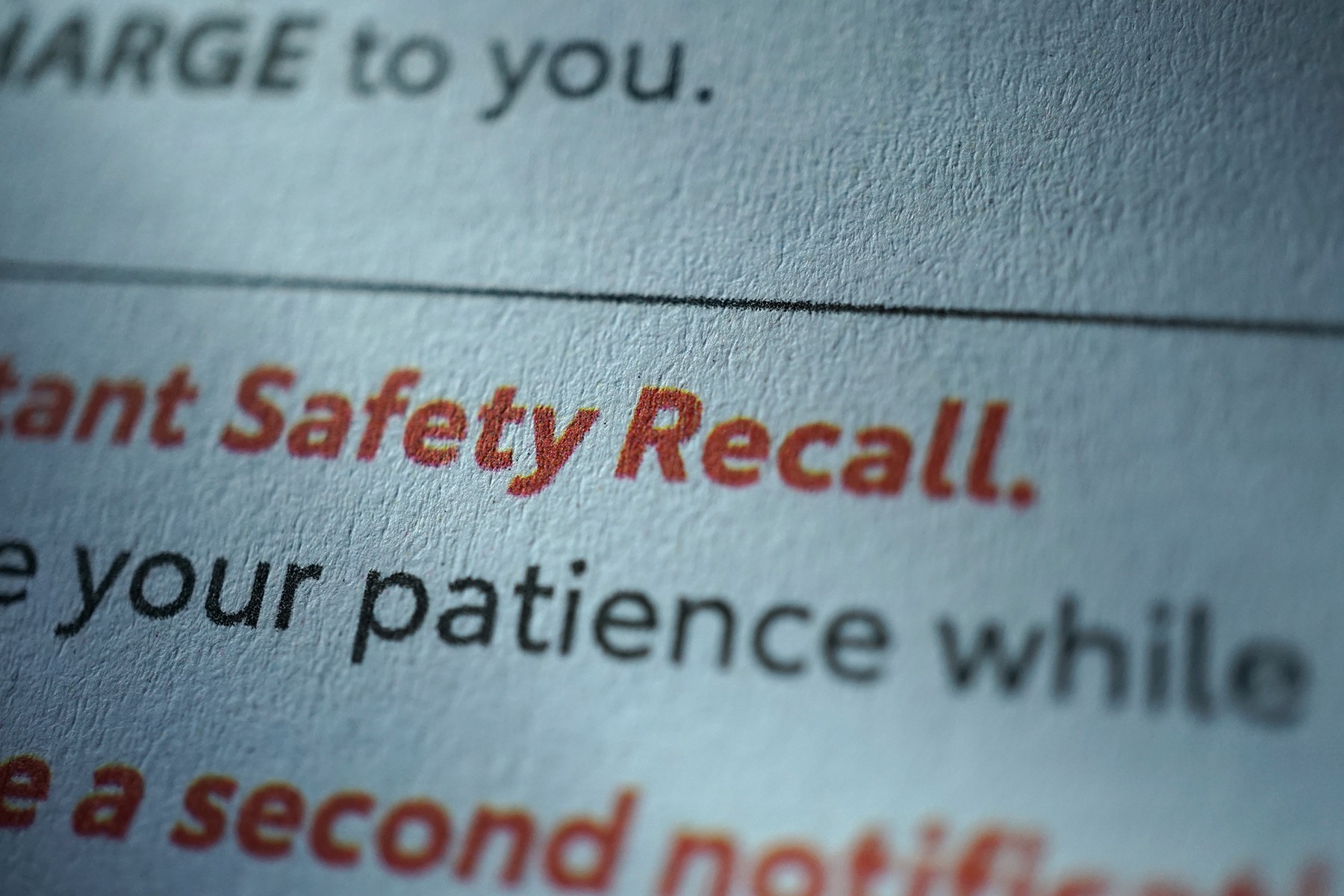The following contributed article by ETQ’s CTO Morgan Palmer was originally published on IndustryWeek. Palmer has been a thought leader in quality management technology for over 20 years and his position as the technical architect for ETQ makes him a key driver of innovation across the company’s product line.
The article has been lightly edited for clarity and narrative flow.
The last decade has seen a dramatic change in how customers view and define quality.
Thanks to the ripple effect of our constantly connected society and the rising level of consumer expectations, quality has become a regular topic of conversation among industry, media and consumers. As a result, companies are painfully aware that a poor-quality product or experience can be the catalyst for the loss of brand reputation, market position and revenue.
Quality remains a prime driver of consumer decision-making, a scenario that has increased the pressure on companies to deliver products to market in a timely and error-free fashion. A recent B2C study said that 53% of consumers rate quality as the most important factor in purchasing decisions. This metric alone can directly impact a vendor or service provider’s business performance.
Quality challenges and pain points can appear anywhere in the manufacturing ecosystem – design, manufacturing, shipping, distribution. It is a challenge for any company to ensure that quality processes are upheld at every stage, which can be seen in the number of product recalls and the daily litany of quality-related woe that appears in the news cycle.
So, what is the catalyst that will change the quality dynamic? And how can companies prevent quality issues and bring to market products that improve customer experience, enhance brand loyalty and drive performance?
Manufacturers need to take a more sophisticated approach to quality management—one that involves an overall quality journey that provides a cohesive roadmap to delivering product and service quality, rather than an ad hoc series of tools and processes.
And, somewhat importantly, the journey should involve a level of risk-based decision-making and proactive thinking from a quality standpoint.
Setting the Stage
The Taoist philosopher Lao Tzu stated that the journey of a thousand miles begins with a single step.
The same applies to a company that wants to improve its quality processes, though there are four steps that they need to follow: Ignite, Accelerate, Expand, Transform. All four stages are unique to the level of a company’s quality maturity and should be considered as signposts to the challenges and available solutions at each stage. Creating a culture of quality does not happen overnight, and companies need to identify where they are on the path to quality utopia.
While the majority of organizations are currently at either Stage 1 (Ignite) or Stage 2 (Accelerate) in their quality journeys, there is a huge opportunity to advance to Stage 3 (Expand) and Stage 4 (Transform) thanks to the advent of new technologies and innovative approaches to quality – otherwise known as Quality 4.0.
Originally coined by LNS Research in 2017, Quality 4.0—a subset of the concept of Industry 4.0—is changing the way manufacturers develop, manage and maintain quality standards throughout the manufacturing process.
A Quality 4.0 approach means brands are infusing traditional quality methods with new technologies—such as machine learning, artificial intelligence, device connectivity, social media, big data and cloud computing—and aligning quality with corporate strategies. Quality 4.0 solutions enable organizations to leverage their digital transformation initiatives to capture new business opportunities through process efficiencies, enhanced service, improved compliance and better brand reputation.
Stage 1: Ignite
As you might expect, companies that are in this stage are essentially just starting to understand why quality matters. The key thing to remember is that quality is industry-agnostic, and the basic challenges that, say, a food or beverage manufacturer or a consumer goods producer are facing, are likely to be the same at this stage.
These quality challenges can include manual and disconnected processes, a lack of centralized systems, a lack of audit finding follow up, uncontrolled or inconsistent documentation, a lack of training for employees, and a minimal amount of corrective action coordination and visibility.
In addition, a company that is deemed to be in the Ignite phase is probably struggling to achieve regulatory compliance and has already experienced the high costs associated with poor quality. As a result, brand reputation and consumer trust may be in jeopardy.
Once the problems have been identified, then several measurable outcomes can take the company forward. These quality-centric outcomes should include a focus on document control, employee training, audit management, corrective action and change management—all of which are achievable footsteps on the path to a more ideal future quality state.
Provided that the company follows through on these continuous improvement goals, then there is no real reason why brand reputation or a level of consumer trust can’t be restored, and a foundational culture of quality be instilled across the organization.
Stage 2: Accelerate
The next stage of the transformation builds on the optimization of the quality processes and adds key stakeholders. The overarching goal is to enable seamless process flows between functions and systems that include but are not limited to capturing data at the source, while leveraging available business optimization tools that produce actionable information.
Companies in the Accelerate stage may be facing similar challenges to those in the Ignite phase, but the difference is that they have acknowledged that they want to do more than just the basics of quality. As a result, companies in this stage are faced with overcoming quality barriers, such as manual data entry across many non-quality systems, user-unfriendly data siloes, a lack of standardized practices (both internally and externally), a perceived lack of visibility, an inability to gather customer feedback and inconsistent or time-consuming decision-making.
Knowing that companies can now readily access the tools needed to progress out of Stage 2 and continue their quality journey, the focus should be on building on the lessons learned in the Ignite phase.
Identifying a solution that can be seamlessly integrated into existing product lifecycle management (PLM), enterprise resource planning (ERP) and customer relationship management (CRM) systems is a first step to drive quality in new product introductions (NPI), nonconformance handling and customer complaints management. A successful integration may also include the establishment of a risk register and the use of advanced analytics.
During the completion of Stage 2, companies typically find that risks are identified and assessed, new products are released more quickly, manufacturing defects and potential delays are minimalized, and there is a more consistent process for decision-making. Optimization is the key aspect here, laying the foundation for when the time comes to move to Stage 3.
Stage 3: Expand
Companies that have reached the third stage of the quality journey are, unsurprisingly, looking to cement their culture of quality around their own best practices and continuous improvement. The focus is now on the entire ecosystem; in other words, the internal infrastructure, external suppliers and, ultimately, customers.
Companies here may have a lack of visibility into their supplier quality performance. The costs of coordinating in-process changes with the various internal stakeholders might have risen, and there are likely to be other reporting systems that are manual and disconnected from the quality process – health and safety reporting, for example.
At this advanced stage, companies can significantly expand the impact of good quality to mitigate business risks – costs of investigation and resolution, supplier defects and recalls, delays in shipping product, potential fines and penalties for non-compliance with federal regulations, to name a few.
The way to do this is to integrate a company’s complete ecosystem of stakeholders into the quality process.
In fact, this stage of the quality journey depends on the emerging tech associated with Quality 4.0. In addition, the support of both company decision makers and the workforce will be crucial, especially as the company moves forward in the overall implementation of advanced analytics, machine learning, connected devices and automated business optimization solutions.
Stage 4: Transform
The final stage of the quality journey should be confirmation that a company has embraced its goals of being a quality leader and is fully invested in the ideals of continuous improvement. At the same time, there will be expectation that Quality 4.0 has been integrated at all levels of the organization.
This may well be the case for some companies that have shifted through the gears to reach the Transform phase, but there are still challenges to overcome. The focus is now on quality harmonization on a global basis, and that is a challenge in itself. Leveraging the available data and advanced analytics processes will encourage a risk-based decision-making approach, but companies also should factor in real-time operational problems and, almost inevitably, the inconsistency of quality across different geographies.
A changing regulatory environment might prevent products from hitting the market when planned, while companies can fail to anticipate or predict quality issues. Factor into the mix the changing demands of the connected society and the quality journey may start to stall when least expected. Quality might be seen by some parts of the organization as an unnecessary cost and a hinderance to a company’s competitive advantage, especially if the resources allocated are either not used efficiently or lead to higher maintenance and field service costs.
The good news is that companies should now have the tools they need to make the changes required. In addition, the actionable insights that have been created during the various stages of the journey itself can now be the catalyst for a company-wide harmonization of previously disparate or siloed processes.
It goes without saying that there is no time limit for the quality journey. Continuous improvement is exactly what it says on the tin, and companies should always be mindful that quality pain points can be generated from a variety of sources.
The caveat is that the journey is a trip without end, especially when you consider the continued evolution of technology. The nirvana offered by Quality 4.0 is within reach, but companies must ensure that the commitment to quality remains pure. A quality journey can provide companies with not only a 360-degree risk picture, but also a consistent picture of global quality.
The good news is that companies stand to reap significant benefits at every stage, no matter where they are in their quality journeys. By investing in the right technology to enhance quality management processes, manufacturers will be able to create a cross-organization culture that ensures every person is dedicated to driving quality outputs.
ETQ helps organizations realize the business opportunities that quality creates. Our industry-leading Reliance 2019 SaaS solution features built-in best practices and best-in-class flexibility, with the software enabled to optimize the critical processes that drive excellence through quality.
To learn more about how ETQ can help you become a quality leader, contact us today. Alternatively, reach out for a demo, and find out how to move through your quality journey.


